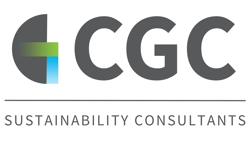

Development
Development of 24 apartments and 4 commercial units to achieve 30% reduciion in CO2
Problems
– 30% reduction in carbon emissions required to comply with the London Plan
– Preference from client to reduce emissions via energy efficiency measures
– Any changes made not to compromise the external design appeal of the building
– Two week time frame to develop the strategy
Services
– High level initial consideration of design, materials and basic plan layout
– Investigation of alternative LZC sources which achieved a less visually intrusive design
– Cost analysis and comparison
– Preliminary Energy Calculations (SAP 2012 and SBEM)
– Code for Sustainable Homes Pre-assessment
– BREEAM New Construction pre-assessment
Results
High levels of fabric efficiency specified throughout the building, including reduced air-leakage rates and mechanical ventilation and heat recovery (MVHR).
Low energy fittings used in both the residential and commercial building services, for example fans and pumps with low power factors. LEDs were used for the commercial units and dedicated low energy fittings for the apartments. These measures all combined to reduce carbon emissions across the development by 8.9%
The remaining 26.1% of the carbon reduction was achieved through the specification of a centralised CHP system, combined with solar hot water and photovoltaics.
Project Details
Delivery
June 2013 – July 2013
Client
DOS Architects
Location
King’s Square, London Borough of Islington
Stakeholders
Higgins
London Borough of Islington
Pollard Thomas Edwards
FURTHER DETAILS
A development of twenty-four apartments and four commercial units was proposed for Kings Square, Islington. Carbon Green Consulting was commissioned to develop a sustainability strategy to comply with Islington Council’s development policy, under the terms of the London Plan, which demands a 30% reduction in carbon emissions across the development.
The client was anxious to find a solution which satisfied the policy requirements in a cost effective manner, ensuring that, wherever possible, energy efficiency measures were selected in preference to expensive heating or cooling plant, or renewables. This needed to be done without compromising the external design appeal of the building. The time frame for developing the strategy was under two weeks.
The team developed a strategy which followed the carbon reduction hierarchy of:
- Avoiding emissions, through passive design;
- Reducing emissions, with energy efficiency measures, and;
- Replacing emissions using renewable energy technologies.
Carbon savings:
| CO2 saved using energy efficiency measures | 9.7 | tCO2 |
| CO2 saved using CHP | 9.6 | tCO2 |
| CO2 saved using renewables | 13.3 | tCO2 |
| Total CO2 saved | 32.6 | tCO2 |
Very high levels of fabric energy efficiency were specified throughout the building, including reduced air-leakage rates of 3m3/h/m2 and mechanical ventilation and heat-recovery (MVHR).
A thoughtful approach was adopted for both the commercial and residential building services, for example, using fans and pumps with low power factors. Intelligent use of lighting included LEDs for the commercial units and dedicated low energy fittings for the apartments. These measures all combined to reduce carbon emissions across the development by 8.9%.
The remaining 21.1% of the carbon reduction was achieved through the specification of a centralised CHP system, combined with solar hot water and photovoltaics.
Ready to talk?
If you'd like to talk to us about your project, do get in touch.
